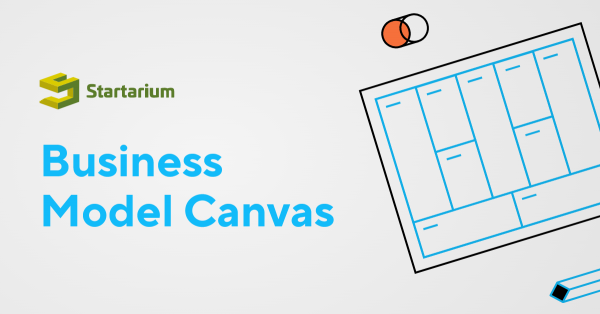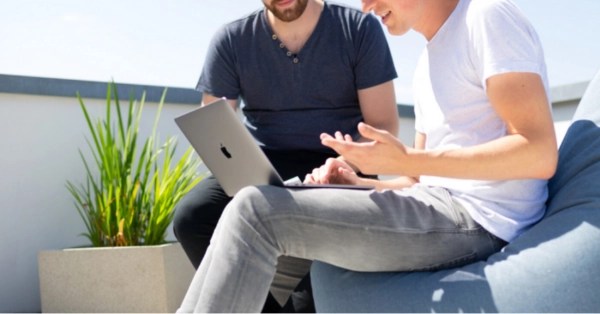Did you fill in your business model canvas? Perfect! Let's talk about how you can get even more creative with it.

The pandemic has made most businesses and creative initiatives to reevaluate the way they are delivering their value. Some of them kept doing what they were initially doing, but they changed the medium they used. For a great deal of them, the use of their initial business model canvas was the place to start.
So, what should you change / test in your Business Model Canvas?
There really is not any right or wrong in this area – try and test and see what works for you. See what happens when you change different sections of your Business Model Canvas:
- What if you change the type of customers you target? Like switching from B2B to B2C - or the other way around. Or maybe something less ”radical”, like trying to also access niche groups. What kind of changes would this generate in the other sections of your BMC?
- What if your value proposition was different? How are the other ways in which you can produce value for your customers?
- What if your costs were different? What if you externalized a part of the things you currently handle internally?
- What if you developed a new line of business derived from what you do? Which are the other ways in which you can meet customers’ needs through what you do?
- What key partners do you want or need in your business? How would things change if you had them?
- How would you function differently if you established and maintained a different kind of relationship with your clients (and maybe other channels for it)?
Of course, the list runs longer than that 😊 But if you could use some inspiration, here are some examples of how other creatives found a different angle of doing what they do best.
Examples that might help you in the process
Art, illustration, visual arts
- Teach others about what you do - Online platforms and dedicated courses
Even before the pandemic hit, more and more e-learning platforms started gathering lots of great content offered by creatives – from creative writing, to drawing and illustration, to creative presentation styles. There are even specialized platforms offering niche creative content where artists of all kinds film their own content and upload it – people who want to learn that specific skill either pay for the course itself or a monthly subscription offering them access to a wide range of forms of artistic expression.
- Private online courses for companies that moved to remote work
For most companies, the pandemic also meant a stop to some of the most important activities and benefits they were offering to their employees, which frequently involved personal development courses and tools. With a lot of creative businesses moving to online, this meant a greater accessibility to customized courses for departments in need of creative activities to help relieve the pressure and anxiety everyone was experiencing in lockdowns.
- Switch to using International handmade platforms / art platforms
With physical shops closing during lockdowns and a drop in on-site shopping after the lockdowns ending, artists turned to online platforms specialized in designer art. Some of them even began using larger, international platforms like Etsy in order to reach more customers overseas, something that they did not necessarily do before the pandemic.
Performance, music & theatre
- Online platforms & Online streaming
After theaters and concert halls shut down, artistic performance moved online, using live streaming and pay-per-view platforms in order to continue their activity. This alo proved to be an opportunity to artists to reach a wider category of public.
- Paid partnerships with big companies to deliver quality content in times of stress & anxiety
In times of solidarity and collective anguish, companies contributed to supporting artistic initiatives and the general public by paying for performances that were widely distributed.
- Personal development courses
As free time gained a critically different form during the pandemic, people started to learn and experiment in the comfort of their own homes – dance, music and theater were probably some of the most popular courses people accessed online.
- Using lockdowns as a creative space
For other artists, lockdowns were used as a space to experiment and reflect on the ”new normal” and the subsequent anxieties of the completely new and tragic situation. This enabled them to innovate in terms of the artistic projects they created – one of the most relevant examples in this area is Bo Burnham’s Inside – a one man show available for streaming on Netflix.
- Lockdown collabs
Lockdowns and restrictions were also used by artists for collaboration and creative synergies for projects encompassing all sorts of artistic creation - online migration meant that possible collaborations were easier to set up and people became more open to proposals that took them out of their comfort zone.
Writing, UX, design
- Freelancer platforms
When the pandemic started, many projects and companies stalled their activities, using ”freeze” as a crisis response. This meant that their collaborators and employees were put on hold / furlough until things would become more stable.
The opportunity created by this particular situation was access to a wider range of freelancers using dedicated platforms to find new projects – from creative writing to design and UX. The need for agile solutions grew and so did the available talent offer.
- Consultancy for other companies that want to develop such skills internally
Other specialists and creative freelancers and specialists began offering their expertise as trainers and consultants for bigger companies who wanted to develop such skills internally.
Additional support for artists and creatives in general
- Using Patreon & similar support platforms
- Twitch
- Interest communities – facebook groups, discord servers, reddit etc
- Collaboration with traditional industries to help them deliver their mission in a more beautiful, intuitive manner























